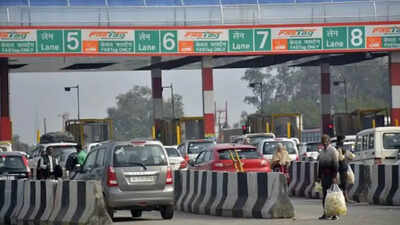India proposes new FASTag toll system with Rs 3,000 annual pass: What it is, pricing options and all you need to know |

In a bid to modernize India’s toll collection system and enhance the convenience of travelling along highways, the central government is said to be contemplating a fresh tolling regime. According to the reports, the proposal seeks to institute an annual pass system with unlimited travel on national highways for a single payment of Rs 3,000. This program is one of a series of plans aimed at streamlining road travel, making it less expensive and more efficient, and digitally integrated, avoiding the hassle of repeated recharges on FASTags, along with new models of pricing and improved infrastructure.
What is FASTag annual toll pass proposed in India
The Indian government is set to introduce a new FASTag Annual Toll Pass, aimed at revolutionizing toll collection on national highways and expressways. Under this proposal, private vehicle owners can opt for an annual pass by paying Rs 3,000, allowing unlimited travel without recurring toll deductions. This initiative seeks to replace the current per-journey toll system, reduce traffic congestion at toll booths, and promote seamless digital payments. A distance-based pricing alternative is also being considered. By leveraging GPS and automated tracking, the policy aims to offer a hassle-free travel experience while ensuring efficient revenue collection and compensation for toll operators.
FASTag Annual Toll Pass: Two payment options under the proposed policy
Annual Toll Pass
- The soul of the plan is in the implementation of a single-payment-per-year toll system. Under this scheme, car owners would be able to pay Rs 3,000 annually for unrestricted use of all national highways, expressways, and state expressways.
- This is a fixed-fee system that is meant to eliminate the hassle of reloading FASTag accounts and monitoring individual toll deductions each time a trip is taken.
- By providing unrestricted use of highways for the entire year, the new system particularly favours frequent users of these roads, including commuters and transporters.
- This flat rate system also fits with the government’s vision of digital governance through simplification of payments and mitigation of dependence on transaction-based tolling.
Distance-based pricing
- Whereas the annual pass system aims at heavy users, the new policy does not neglect the less frequent users of highways. For them, a pay-as-you-go model that is flexible has been suggested, costing Rs 50 for every 100 kilometers.
- This makes sure that periodic users are not asked to pay a uniform annual fee that could be much more than their actual usage of tolls. Rather, they can pay in proportion to the distance covered, which makes the system fairer.
This two-pricing model is in line with the government’s vision to construct a scalable tolling solution that serves a wide range of users. Others who do not want to make an annual payment can also utilise highways under a reasonable and predictable tariff regime, without being subject to financial disadvantage.
Benefits of FASTag Annual Toll Pass
- No new documentation required
Vehicle owners using FASTags won’t need to provide additional documents or update their accounts to adopt the new annual pass system.The integration ensures continuity for millions of existing FASTag users, preventing confusion or disruptions common in large policy shifts.
- Cancellation of lifetime FASTag plan
The earlier proposal for a Rs 30,000 lifetime FASTag valid for 15 years has been scrapped, signaling a shift towards more flexible and user-friendly tolling models.
- Compatibility with existing infrastructure
The new system is designed to work seamlessly with current FASTag technology and accounts, making adoption easier and more efficient.
Government’s plan for seamless and barrier- free toll booths
The other revolutionary element of the policy is the intention to do away with physical toll barriers within highway booths. The government intends phasing out booms and legacy sensor-based systems to adopt a totally barrier-free tolling regime. This innovation seeks to do away with the bottlenecks introduced by physical collection of tolls, leading to frequent congestion, vehicle idling, and wastage of fuel.The implementation of barrier-free tolling technologies—presumably using automatic number plate recognition (ANPR), satellite-based location, or GPS-enabled technology—would enable cars to drive through toll zones at regular speeds without any halt.
When will the new FASTag annual toll pass will be implemented
To date, the government has not issued official word on the specifics of the proposed tolling system. Though reports indicate planning to be well advanced, no official policy announcement has been made and independent confirmation of the plan continues to wait. That said, the move represents an encouraging step in India’s continuing push toward the development of its transport infrastructure and the provision of citizen-centric digital services.





